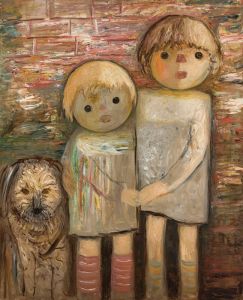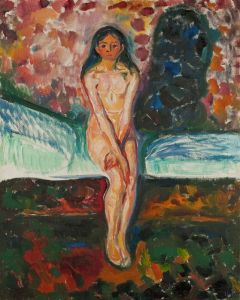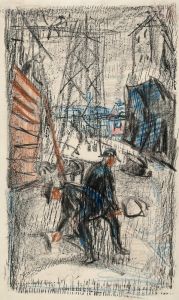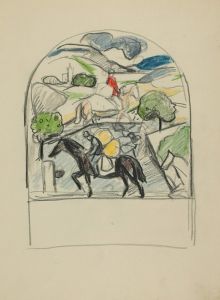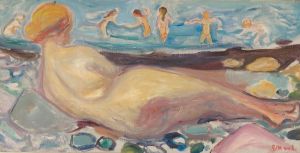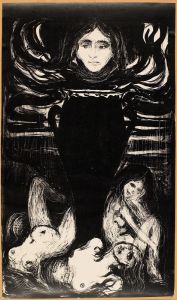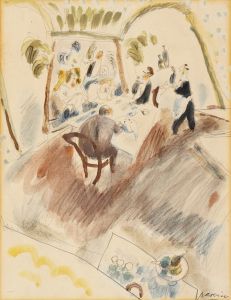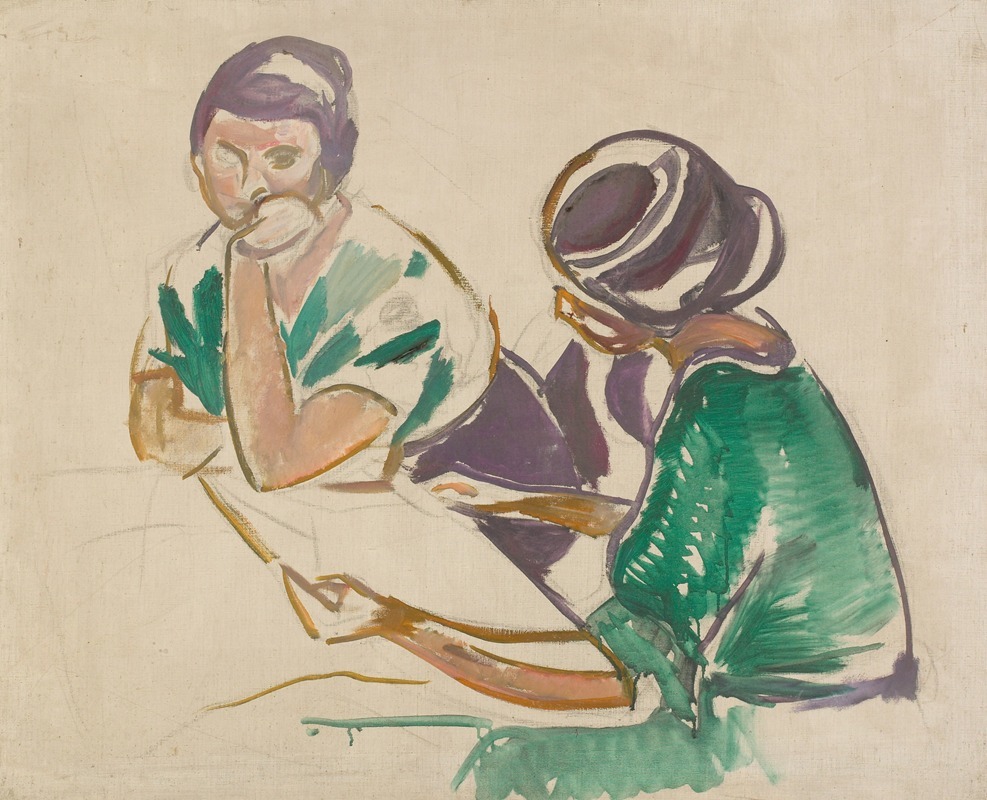
Two Women at the Table
A hand-painted replica of Edvard Munch’s masterpiece Two Women at the Table, meticulously crafted by professional artists to capture the true essence of the original. Each piece is created with museum-quality canvas and rare mineral pigments, carefully painted by experienced artists with delicate brushstrokes and rich, layered colors to perfectly recreate the texture of the original artwork. Unlike machine-printed reproductions, this hand-painted version brings the painting to life, infused with the artist’s emotions and skill in every stroke. Whether for personal collection or home decoration, it instantly elevates the artistic atmosphere of any space.
"Two Women at the Table" is a painting by the renowned Norwegian artist Edvard Munch. Munch, born on December 12, 1863, and passing away on January 23, 1944, is best known for his evocative and emotional works that often explore themes of existential angst, love, and death. His most famous painting, "The Scream," has become an iconic representation of modern existentialism.
"Two Women at the Table" was created in 1891, during a period when Munch was developing his distinctive style that would later be associated with Symbolism and Expressionism. The painting depicts two women seated at a table, engaged in what appears to be a moment of quiet contemplation or conversation. The setting is intimate, with the figures rendered in a manner that emphasizes their emotional states rather than their physical details.
The composition of the painting is notable for its use of color and light. Munch employs a muted palette, with shades of brown, green, and blue dominating the scene. The lighting is soft and diffused, creating a somber and reflective atmosphere. The figures themselves are painted with loose, expressive brushstrokes, a technique that Munch often used to convey psychological depth and emotional intensity.
One of the women in the painting is dressed in a dark outfit, her face partially obscured by shadows, suggesting a sense of melancholy or introspection. The other woman, dressed in lighter colors, appears to be more engaged, possibly offering comfort or companionship. This contrast between the two figures may reflect Munch's interest in the complexities of human relationships and the inner lives of his subjects.
"Two Women at the Table" is part of Munch's broader exploration of themes related to human emotion and interaction. Throughout his career, Munch was deeply influenced by his own personal experiences, including the early loss of his mother and sister, which profoundly shaped his outlook on life and art. His works often delve into the darker aspects of the human psyche, capturing moments of despair, anxiety, and longing.
The painting is housed in the Munch Museum in Oslo, Norway, which holds the largest collection of Munch's works. The museum was established in 1963, the centennial of Munch's birth, and serves as a testament to his enduring legacy and influence on modern art. "Two Women at the Table" is one of many pieces in the museum's collection that showcases Munch's ability to convey deep emotional resonance through his art.
In summary, "Two Women at the Table" by Edvard Munch is a poignant and introspective work that exemplifies the artist's skill in capturing the subtleties of human emotion. Through his use of color, light, and expressive brushwork, Munch creates a scene that invites viewers to reflect on the complexities of human relationships and the inner lives of his subjects. The painting remains an important part of Munch's oeuvre and continues to be celebrated for its emotional depth and artistic significance.





